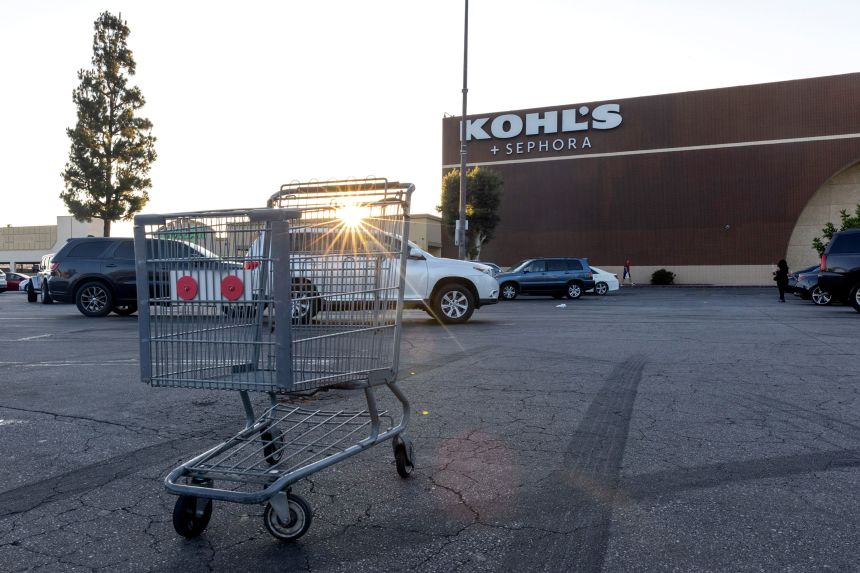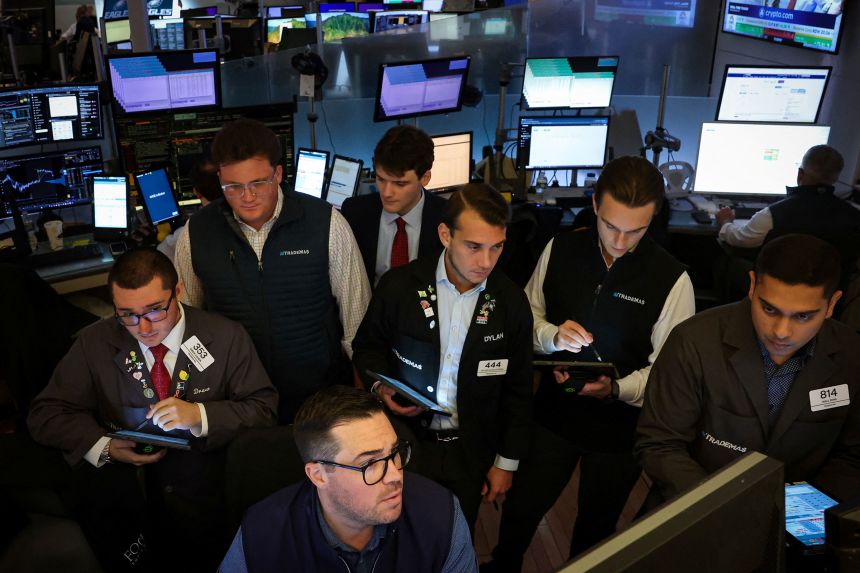Like most sequels, “Meme Stock Mania Part II” can’t quite replicate the magic of the original.
But for a couple of days, it looked like we were on the brink of a repeat of that early-2021 fervor, when an army of regular-Joe day-traders banded together online to get rich quick while waging financial war on the supposedly more sophisticated suits on Wall Street.
ICYMI: Kohl’s this week became a day-trader favorite, with shares (KSS) more than doubling at one point Tuesday before ending the day up 27%, its second-best trading day ever. GoPro, the wearable camera company (GPRO), finished 41% higher Tuesday — its best trading day ever — and was up more than 50% Wednesday morning. Krispy Kreme (DNUT) and financial services firm Rocket (RKT) were also surging.
Much of that fire had been snuffed out by the end of the day Wednesday. Kohl’s ended the day down 14%. GoPro was still up 12% but well off its intraday highs. Krispy Kreme was up 4%, and Rocket rose 1.3%.

Still hot, but not quite boiling.
“The crew is moving on very quickly,” Steve Sosnick of Interactive Brokers said Wednesday. “I think people are realizing that this is just purely a social media-based ramp and that it’s not based on anything fundamental.”
That is the essence of a meme stock. There were no bombshell earnings reports, no regulatory huddles cleared, no C-suite shakeups, nothing that should drive these companies’ shares so high, so quickly. Enthusiasm tends to spring from social media chatter, which gets amplified by memes and posters egging one another on to buy more.
That was largely true of the 2021 craze, too. But four years ago, there was a lot more than just speculative fervor driving the movement that birthed the term “meme stock.”
Once upon a time…
Think back to what you were doing in January 2021.
Covid vaccines hadn’t been widely disbursed; the start of the “return to office” was still at least a year away; Joe Biden had just assumed the presidency. At the risk of overgeneralizing, we’d just experienced one of the weirdest years of our lives.
Toss in some buckets of free money in the form of stimulus checks and near-zero-percent borrowing rates, and you’ve got the makings of a YOLO financial rebellion.
If you’d wandered into the subreddit WallStreetBets in late 2020, you’d have discovered an absurdly brash community of armchair experts in finance hellbent on propping up shares of companies like GameStop, a shopping mall staple that had they believed had been unfairly maligned by short-sellers and undervalued by the Street. The humor was crude and overwhelmingly male. But to many, it felt like finding not just a community but a financial cheat code.

The goal was two-pronged: First, the day-traders would get rich quick with a momentum trade, pouring their money into the stock and posting screenshots of their gains. True believers cheered for “diamond hands,” meaning they wouldn’t sell their holdings. Those who did were shamed as “paper hands.”
At the same time, those day-trading Davids would target professional Goliaths known as short-sellers who had taken the opposite position, betting the stock would go down. With enough people pushing the stock higher, they created a “short squeeze” — forcing the short-sellers to exit their losing trade and creating even more upward momentum for the stock.
2021’s frenzy felt like us vs. them, fueled by a very online form of schadenfreude. If you got in early, you might have walked away rich; if you came in late, or held the stock through the inevitable crash, you lost the game.
“It was a way to belong to something in a period where we were all socially disconnected,” Sosnick says. “Now, it’s just, quite frankly, a vehicle for pumping and dumping.”
‘Flight to crap’
The flurry around meme stocks isn’t the only echo of 2021 in the market right now.
Crypto was riding high in 2021, before an epic crash linked to Sam Bankman-Fried’s FTX trading platform nearly collapsed the industry in the fall of 2022. Three years later, bitcoin is trading near its all-time high around $120,000 — having bounced back some 600% from its 2022 lows — as President Donald Trump has become personally invested in the industry and established a friendly regulatory regime around digital assets.
SPACs — “special purpose acquisition companies” that fast-track a company’s route to public trading — have also made a quiet comeback, minus some of the celebrity backings that made headlines in 2021. A SPAC, also known as a blank-check merger, gets you to market faster, but it comes with less due diligence and greater risk.
“A SPAC is sort of an ultimate sign of a frothy market. ‘Give me some money, trust me, I’ll come up with something,” Sosnick says.
While the market has experienced bouts of enormous volatility in recent months, stocks continue to push higher. The S&P 500 is up more than 5% since January. On Wednesday, the S&P 500 and Nasdaq both hit fresh record highs, while the Dow closed just four points shy of a record.
The meme stock renaissance seems to reflect a behavior Sosnick calls the “flight to crap.” It’s the inverse of the often-cited “flight to quality” that happens when investors are anxious about a downturn.